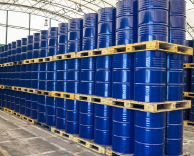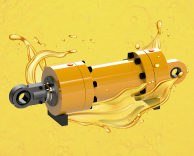How to Choose the Right Lubricant for Optimal Machine Performance
Introduction
Lubrication is essential to the reliable functioning of industrial machinery. Choosing the correct lubricant is the key to reducing your downtime, minimizing wear, and extending equipment life. But there are so many possibilities that selecting the correct one can be overwhelming. This guide offers practical advice and selection criteria for the right lubricant.
Why choosing the right lubricant matters
Some key factors are: Since lubricant affects directly:
- Machine Efficiency: Smooth operation is guaranteed if there is no friction due to a lubricant.
- Long-lastingness: Prevents wear and tear to machinery, extends the life of machinery
- Saving Costs: Cuts costs on maintenance and avoids unexpected malfunctions from occurring.
- Green Compliance: Reduces waste, and is in compliance with PR-forms.
Key Factors to Consider When Selecting a Lubricant
1. Scope of Application
- Determine the function of the lubricant: whether to reduce friction, cool, or prevent corrosion.
- Describe which machine or system the lubricant is to be used on.
- Match the characteristics of the lubricant to the conditions of use, e.g., temperature, speed, and load.
2. Physical and chemical properties
- Evaluate Viscosity, Viscosity-Index, and Density.
- Make certain the lubrication meets to test requirements for water, acidity, and oxidation resistance.
- Look for certification such as ISO or ASTM.
3. Product Properties
- Evaluate the most primal KPIs:
- Demulsibility: Ability to differentiate water and keep power.
- Pour Point: Measures low-temperature performance.
- Dropping Point: A measure of high temperature stability.
4. Product Compatibility
- Make sure that the lubricant is:
- Seals and gaskets to reduce leak issues.
- Existing lubricants, if blending is required
- Perform interoperability tests to prevent incompatibility.
5. Quality Control at the Reception
- Test for impurities, even in new oil.
- Use a filtration system to remove impurities before use.
- Make sure that the supplier complies with quality standards.
6. Lubricant Disposal
- Work with suppliers to create disposal options.
- Comply with all applicable local environmental laws and regulations.
- Choose recyclable or biodegradable lubricants if available.
To know more about more Minimac systems - Click Here.
The Role of Lubrication in Maintenance
Lubrication goes beyond simply putting oil on things that are moving.
- Protects against corrosion.
- Function as a cooling agent in high-temperature activities.
- Its reduced friction can make the energy more savings.
- Serve as a diagnostic tool when analyzing a lubricant sample for contaminants.
How Lubricant Quality is Assessed
- Do the tests at the laboratory for the viscosity, flash point, and oxidation.
- Consider predictive maintenance strategies, for example, oil analysis.
- Verify performance in real-world situations to determine its dependability.
Common Lubricant Mistakes to Avoid When Choosing a Lubricant
- Ignoring Specifications: Always consult the manufacturer’s guidelines.
- Environmental Conditions Ignored: What you experience is not merely temperature but also humidity, and your exposure to particulates and other pollutants in the air.
- Incompatible Lubricants: Don't mix to prevent degradation.
- Ignoring Maintenance Intervals: Change oils as they’re due and keep an eye on their quality.
Environmental Considerations
It is usable in lubrication and suitability concerns. For the sake of ecological contribution:
- Use lubricants that are bio-based or biodegradable.
- Implement recycling programs.
- Do not use too much lubricant, as it may be wasted.
Conclusion
Choosing the proper lubricant is key to achieving overall performance improvements and minimising downtime, ensuring the efficiency of your operation. Thinking about the things in this guide can help you keep your equipment and profits running smoothly.
Learn more about our services and industry insights by visiting our official LinkedIn page: Minimac Systems
FAQs
- Reduces friction.
- Minimizes wear.
- Cools engine components.
- Cleans and removes debris.
- Seals gaps between parts.
- Removes rust and corrosion.





